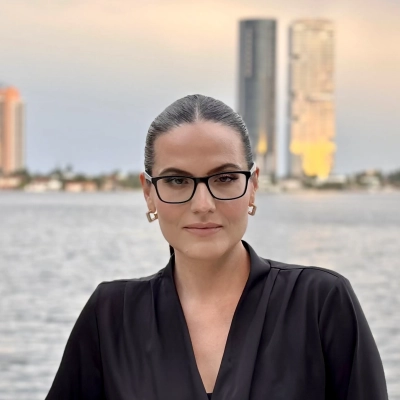How to Counsel Someone Grieving Multiple Losses: 8 Techniques for Processing Overlapping Grief
Grief becomes uniquely complex when multiple losses occur simultaneously, requiring specialized approaches from mental health professionals. This article presents eight evidence-based techniques recommended by bereavement experts for helping clients process overlapping grief experiences. The strategies offer practical methods for creating emotional clarity when counseling those facing several significant losses at once.
Separate Each Loss Into Its Own Narrative
When someone carries layered grief, I begin by helping them separate each loss into its own narrative. People often describe their pain as one overwhelming weight, but naming each loss—whether of a person, season, or sense of identity—restores a sense of order to the chaos. I use a journaling technique called "grief mapping," where the individual writes the names or events on separate pages and records what each represents emotionally, spiritually, and physically.
This method helps them see patterns without collapsing every sorrow into one. It gives permission to honor each grief at its own pace while still recognizing the connections between them. Over time, the mapping exercise creates space for hope to re-enter, not through forced positivity, but through clarity. Healing rarely happens all at once; it begins when pain is seen clearly enough to be carried one piece at a time.

Use Layered Processing for Emotional Clarity
When someone experiences several losses close together, the emotional impact can be profound. The nervous system often responds by either intensifying feelings to an overwhelming degree or shutting down altogether to cope with the flood of grief. This creates a complicated psychological landscape in which the boundaries between different losses blur, and the individual has a much harder time to fully process or make sense of what they're feeling. One of the central goals in therapy in this situation is to help bring structure and clarity to emotional experiences so that healing can begin without forcing the grieving process.
An especially useful psychological technique is "layered processing" in which each loss is recognized as part of a broader emotional tapestry rather than trying to isolate them completely. Instead of demanding that the person focus on one loss at a time, therapy helps them notice how different feelings interact, overlap, and influence one another. By exploring these emotional layers with guidance, the person gradually learns to differentiate grief responses and understand which emotions are connected to which loss. This typically involves beginning with grounding exercises to stabilize the mind and body, followed by structured reflection through journaling, storytelling, or verbal processing in therapy, which allows these grief layers to take clearer shape. This process doesn't rush grief or minimize its complexity, instead it creates a safe framework in which it can be experienced without becoming consuming. What makes layered processing particularly effective is its respect for the way real emotional experiences behave. Grief rarely unfolds in a linear, tidy fashion. When losses are layered, the healing process must also be layered. By helping individuals hold their emotions with more clarity and compassion, this approach allows them to gradually reclaim a sense of agency and emotional coherence in the midst of overlapping pain.

Assign Physical Anchors to Different Losses
Grief doesn't stack neatly in your brain, it creates what I call a "grief cascade" where multiple losses blur together and overwhelm the hippocampus's ability to process and store emotional memories properly. When someone's grieving multiple losses at once, their nervous system gets stuck in a kind of perpetual threat state because there's no recovery window between hits.
The technique that works best in my practice is something I adapted from trauma neuroscience called "loss anchoring." Instead of trying to process everything at once, which just floods the amygdala, I have clients physically separate their losses by assigning each one a specific object, place, or time of day. One client lost her father, her job, and her marriage within eight months. We gave each loss its own "container"—she'd grieve her dad during morning walks, her career during evening journaling, and her marriage on Thursday therapy sessions. Sounds overly structured, but it gave her prefrontel cortex something to grab onto when the grief felt like drowning.
What most people don't realize is that overlapping grief creates a kind of cognitive dissonance where you can't figure out which loss you're actually crying about in any given moment. That confusion itself becomes traumatic because your brain needs narrative coherence to heal. By anchoring each loss separately, you're essentially telling your hippocampus, "This pain belongs here, that pain belongs there," and suddenly the chaos starts organizing itself into something your brain can actually metabolize.
The other piece that matters: grief isn't linear even with one loss, and with multiple losses it's more like a pinball machine. I tell clients to stop waiting to "finish" grieving one thing before they're allowed to feel the next. Your brain's working on all of it simultaneously in the background anyway, whether you give it permission or not.
Rotate Focus Between Losses Systematically
Implementing systematic rotation between loss focus offers structure to what often feels like emotional chaos. This technique establishes a predictable schedule where attention shifts deliberately between different losses on specific days or times. The rotation system helps prevent any single loss from dominating the grief experience while ensuring all losses receive appropriate attention. This methodical approach reduces the common feeling of being overwhelmed that accompanies multiple losses occurring close together.
The counselor can help establish appropriate time frames for each rotation, adjusting as needed based on emotional capacity and healing progress. By creating this structured approach, individuals gain a sense of control within the unpredictable landscape of grief. Begin by designating specific times this week to focus on each separate loss you're experiencing.
Express Specific Losses Through Art Therapy
Art therapy provides a unique approach to compartmentalized processing of multiple losses. Through different artistic mediums, individuals can express emotions tied to specific losses without the limitations of verbal communication. Creating separate art pieces for each loss allows complex feelings to emerge naturally in a contained, safe environment. The creative process activates different parts of the brain than talk therapy, often accessing deeper emotions that might otherwise remain unexpressed.
Art therapy also provides tangible representations of progress over time as the individual's relationship with each loss evolves. The finished artwork serves as both an emotional outlet and a concrete reminder of the healing journey. Try expressing your feelings about one specific loss through a simple drawing or collage today.
Create Dedicated Time for Individual Losses
Creating emotional space for each loss is essential when counseling someone experiencing multiple griefs. The counselor should encourage the individual to mentally separate each loss as its own unique experience deserving of attention. This approach prevents overwhelming emotions and allows for clearer understanding of complex feelings attached to different losses. A helpful technique involves dedicating specific time periods solely to processing one particular loss before moving to another.
Clients benefit from permission to fully explore the emotions related to each loss without guilt about neglecting others. The grieving person should be encouraged to use journals to track which losses have received attention and which still need focused emotional processing. Take time today to create a dedicated emotional space for each significant loss in your life.
Develop Unique Rituals for Each Loss
Ritualized acknowledgment offers a powerful framework for processing separate griefs simultaneously. Counselors can guide clients to develop unique symbolic actions or ceremonies for each specific loss they're experiencing. These rituals create meaningful boundaries between different griefs and prevent them from blending into an overwhelming emotional mass. The physical actions involved in rituals engage multiple senses and provide tangible connection to abstract emotions during the healing process.
Simple rituals might include lighting different colored candles, visiting meaningful locations, or creating memory items specific to each loss. Regular practice of these personalized rituals helps integrate grief into daily life while honoring each loss individually. Consider developing a simple ritual to honor each separate loss you're experiencing.
Visualize Losses on a Chronological Timeline
Timeline visualization serves as an effective tool for helping grieving individuals separate concurrent losses. Counselors can guide clients to create visual representations of their losses along a chronological path, marking significant events and emotional responses. This approach helps identify how different losses intersect and influence each other while maintaining their distinct identities. The visual nature of timelines makes abstract emotional experiences more concrete and easier to process cognitively.
Adding colors, symbols, or images to the timeline can further differentiate emotional responses associated with each loss. The physical act of creating this visual representation promotes active engagement with grief rather than avoidance. Begin creating your grief timeline today by mapping out when each loss occurred and how they relate to one another.


